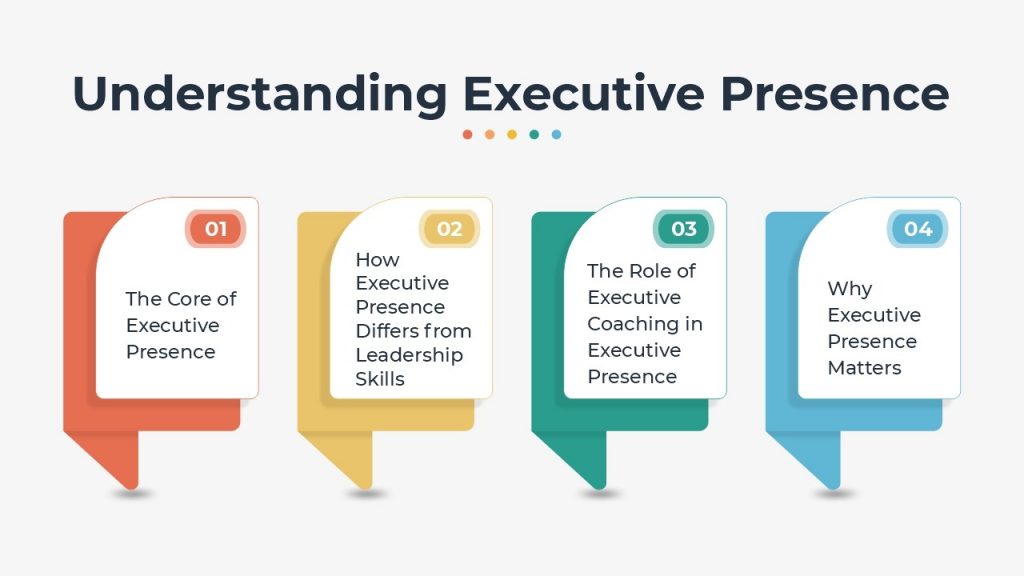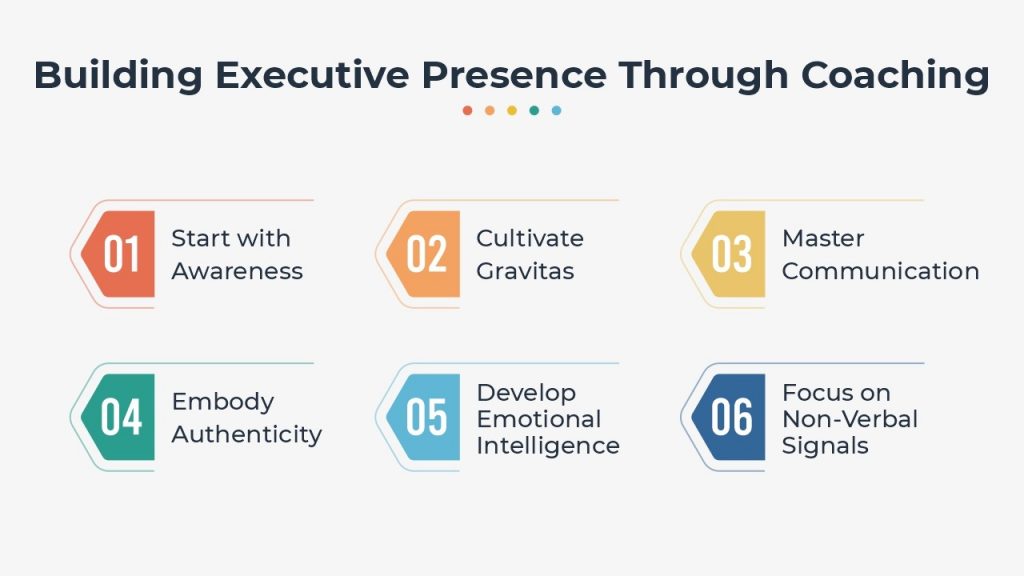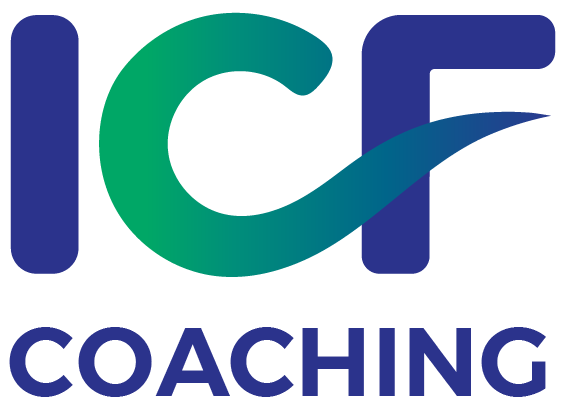Table of Contents
ToggleExecutive Coaching: A Tool to Magnify Your Executive Presence

In a world that demands swift decisions and unyielding confidence, executive presence stands as the invisible crown of leadership. It’s the aura that fills a room before you even utter a word, the magnetic pull that makes others lean in when you speak. For many, this trait appears elusive—a blend of charisma, clarity, and command that feels almost magical. But here’s the secret: executive presence isn’t just something you’re born with. It’s a skill, one that can be refined and mastered through the guiding hand of executive coaching.
Imagine a symphony conductor leading an orchestra. Every movement of their hand, every slight gesture, commands attention and orchestrates harmony. That’s executive presence in action: the ability to lead, inspire, and unify people under a shared vision. The question, then, is how do you cultivate this artful blend of poise and influence? The answer lies in a strategic approach where executive coaching becomes your compass.
Understanding Executive Presence
In the vast tapestry of leadership, executive presence is the golden thread that binds influence, authority, and trust. It is an intangible yet powerful force that makes a leader unforgettable. Unlike the structured mechanics of leadership skills, executive presence is the art of perception—the way a leader is seen, felt, and remembered.
At its core, executive presence encompasses confidence, poise, and authenticity. It’s not about commanding a room with sheer volume but captivating it with quiet strength. Leaders with executive presence possess the rare ability to inspire action, foster trust, and create connections effortlessly.

The Core of Executive Presence
Executive presence can be distilled into three key elements:
- Gravitas – This is the leader’s ability to project authority and wisdom. It’s a calm assurance, a quiet confidence, more importantly, confidence without arrogance, that reassures others even in uncertain times.
- Communication – Executive presence thrives on clear, persuasive, and empathetic communication. Whether speaking to a crowd or engaging in one-on-one dialogue, leaders with presence make others feel understood and inspired.
- Appearance – It isn’t about adhering to rigid standards but embodying a polished and professional demeanor that aligns with the leader’s message.
How Executive Presence Differs from Leadership Skills
Leadership skills encompass strategy, decision-making, and team management—the tangible tools of leadership. Executive presence, on the other hand, is about perception. It is the invisible yet magnetic quality that inspires trust and draws others in. While leadership skills can be measured, executive presence is felt.
For example, a leader with strong organisational skills may efficiently delegate tasks. However, a leader with executive presence ensures those tasks are not only delegated but embraced with enthusiasm. The former leads with structure; the latter leads with connection.
The Role of Executive Coaching in Executive Presence
Developing executive presence isn’t a solitary journey. Executive coaching serves as a transformative guide, helping leaders identify their unique strengths and refine their impact. Through tailored sessions, coaching bridges the gap between potential and perception, enabling leaders to cultivate the essence of presence.
Coaching instills self-awareness, helping leaders recognise how their words, actions, and even silences influence others. It’s a process of peeling back layers to reveal the authentic self—a self that inspires confidence and loyalty.
Why Executive Presence Matters
In today’s fast-paced world, where decisions are made in the blink of an eye, executive presence is a competitive advantage. It’s not merely a trait of good leaders but a hallmark of exceptional ones. Those who embody it don’t just lead—they inspire, influence, and ignite change.
To cultivate executive presence is to embark on a journey of self-discovery, guided by the wisdom of executive coaching. Together, they transform leaders into visionaries, weaving charisma, confidence, and authenticity into the fabric of their leadership.
The Intersection of Executive Presence and Executive Coaching
Executive presence and executive coaching are the dynamic duo of modern leadership. Together, they form the bridge between untapped potential and transformative leadership, creating a synergy that empowers leaders to rise above the ordinary.
What is Executive Presence?
Executive presence is a blend of gravitas, clarity, and connection. It’s not about demanding attention but commanding respect. Leaders with executive presence influence through authenticity and inspire through empathy, leaving a lasting impression.
What is Executive Coaching?
Executive coaching is a personalised development process that helps leaders sharpen their skills, address blind spots, and amplify their impact. It’s a partnership designed to unlock potential and accelerate growth.
The Intersection of Presence and Coaching
At first glance, executive presence may seem innate—a gift reserved for the lucky few. However, coaching reveals a different truth: executive presence is a skill, one that can be nurtured and refined. Here’s how the intersection works:
- Developing Awareness: Coaching begins with helping leaders see themselves through the eyes of others. What signals are they sending? What impression do they leave behind?
- Building Confidence: Executive coaching fosters self-assurance, enabling leaders to project confidence without arrogance. It teaches them to trust their instincts and embrace their strengths.
- Enhancing Communication: A cornerstone of executive presence is effective communication. Coaching hones this skill, ensuring that every word, tone, and gesture aligns with the leader’s message.
- Fostering Authenticity: True presence stems from authenticity. Through coaching, leaders learn to embrace their genuine selves, shedding pretenses and building trust.
The Transformative Power of Coaching
The synergy between executive coaching and presence is transformative. Coaching doesn’t merely polish the surface; it reshapes the foundation. Leaders emerge not only more confident but also more connected to their teams, their mission, and themselves.
Why This Intersection Matters
In an era defined by complexity and rapid change, leaders must not only solve problems but inspire solutions. Executive presence and coaching equip them to do both. Together, they create leaders who don’t just manage—they elevate, guiding their organisations to new heights with clarity and purpose.
Building Executive Presence Through Coaching
Building executive presence is an art, and executive coaching is the brush that helps leaders paint their masterpiece. Presence isn’t about imitating others; it’s about amplifying your authentic self, aligning your actions with your aspirations.

Step 1: Start with Awareness
Every journey begins with a first step, and for building presence, that step is awareness. Coaching provides tools like feedback assessments and reflective exercises that help leaders understand how they’re perceived. Are you projecting confidence or uncertainty? Are your messages clear or clouded? Awareness is the key to transformation.
Step 2: Cultivate Gravitas
Gravitas—the quiet authority that commands respect—is the cornerstone of executive presence. Coaching teaches leaders to remain calm under pressure, to speak with conviction, and to project a steady demeanor. It’s about being the anchor in turbulent waters.
Step 3: Master Communication
Great leaders are great communicators. Through coaching, leaders learn to refine their verbal and non-verbal cues. From tone to timing, every aspect of communication becomes intentional, ensuring messages resonate deeply.
Step 4: Embody Authenticity
Executive presence without authenticity rings hollow. Coaching encourages leaders to embrace their values, strengths, and quirks, creating a presence that feels genuine and relatable.
Step 5: Develop Emotional Intelligence
Empathy and self-awareness are pillars of emotional intelligence, a vital component of presence. Coaching helps leaders navigate interpersonal dynamics, fostering trust and collaboration.
Step 6: Focus on Non-Verbal Signals
A leader’s body language often speaks louder than their words. Coaching sharpens non-verbal communication, ensuring that posture, eye contact, and gestures align with the leader’s intent.
The Impact of Coaching on Presence
The process of building executive presence through coaching is transformative. Leaders emerge with a magnetic presence that inspires confidence, fosters collaboration, and drives results. They learn to lead not from a pedestal but from within, connecting authentically and influencing profoundly.
Executive coaching doesn’t just shape leaders; it shapes futures. It bridges the gap between potential and purpose, enabling leaders to leave a legacy of inspiration, trust, and growth.
Real-World Applications
Executive Presence in Action
Executive presence is the invisible yet undeniable quality that sets certain leaders apart. It manifests in moments of high stakes:- Corporate Presentations: Imagine a CEO addressing a room of investors. Their calm demeanor, clear communication, and authentic confidence determine the trust and support they garner.
- Conflict Resolution: Leaders with executive presence navigate disagreements with a blend of empathy and authority, ensuring all parties feel heard while steering towards resolution.
- Change Management: In times of transformation, a leader with presence serves as a beacon, guiding their team through uncertainty with vision and assurance.
From the quiet reassurance of a steady hand during crises to the bold decisiveness required in strategic pivots, executive presence is the lifeblood of leadership under pressure.
Executive Coaching in Practice
Executive coaching takes the innate potential of leaders and refines it into measurable impact. It’s a hands-on, personalised process that transforms good leaders into great ones. Its real-world applications include:- Career Development: Coaching helps individuals climb the corporate ladder by honing communication skills, emotional intelligence, and decision-making abilities.
- Team Dynamics: By improving a leader’s interpersonal skills, coaching fosters healthier team relationships, leading to improved morale and productivity.
- Performance Enhancement: Executive coaching provides a structured framework for leaders to set and achieve professional goals, turning ambitions into tangible achievements.
The Synergy of Executive Presence and Coaching
When combined, executive presence and executive coaching create a powerful synergy. For example, a leader might possess technical expertise but lack the confidence to influence others effectively. Coaching helps bridge this gap by instilling self-assurance and teaching the art of persuasion. Consider a scenario where a leader struggles to rally their team around a bold vision. With executive coaching, they learn to harness their presence—cultivating trust, building rapport, and inspiring action.Beyond the Corporate World
The impact of executive presence and coaching isn’t confined to boardrooms. These skills resonate in community leadership, politics, education, and entrepreneurship. From inspiring a grassroots movement to navigating a classroom of diverse learners, the principles of presence and coaching create ripple effects of positive change. In the real world, executive presence and executive coaching are more than abstract concepts—they are catalysts for transformation. They enable leaders to rise to challenges, inspire their teams, and leave an indelible mark on their organisations and communities. Their applications stretch across industries and borders, proving that leadership is both a skill and an art.The Future of Executive Coaching and Presence
As we navigate the uncharted waters of an evolving world, the role of executive presence and executive coaching grows more significant. Leadership is no longer about authority alone—it’s about connection, empathy, and adaptability. The future beckons a new era where these concepts intertwine, driving innovation and resilience.
Executive Presence in the Age of Complexity
The modern leader faces unprecedented challenges—global crises, technological disruptions, and cultural shifts. In such a landscape, executive presence becomes a compass.
- Virtual Leadership: In remote and hybrid work environments, presence transcends physicality. Leaders must project confidence and clarity through screens, crafting their influence with words and gestures alone.
- Cultural Sensitivity: As diversity and inclusion take center stage, leaders must embody presence that respects and values varied perspectives.
- Visionary Leadership: The future demands leaders who inspire not with authority but with authenticity—those who can paint a compelling vision and rally others to achieve it.
Executive Coaching: Evolving with the Times
Executive coaching, too, is evolving. It’s no longer confined to a select few at the top of the hierarchy. Instead, it’s becoming a universal tool for growth and adaptability.
- Technology Integration: Virtual coaching platforms are making personalised leadership development accessible to a broader audience, breaking geographic barriers.
- Focus on Soft Skills: Emotional intelligence, resilience, and adaptability are becoming central themes in coaching sessions.
- Leadership at Every Level: Coaching is no longer reserved for executives alone. Organisations are investing in coaching for managers, team leads, and even high-potential employees, creating a culture of continuous development.
The Intersection of AI and Coaching
Artificial Intelligence is shaping the future of executive coaching. AI-driven tools can provide real-time feedback, simulate challenging scenarios, and analyse leadership behaviors. While technology won’t replace human coaches, it will enhance their effectiveness, creating a hybrid model of personalised development.
Why the Future Demands Presence and Coaching
The future is unpredictable, but one thing is clear: leaders must embody both competence and compassion. Executive presence ensures they can navigate uncertainty with confidence, while coaching equips them with the tools to grow and adapt.
In a world where change is the only constant, presence and coaching act as anchors, grounding leaders while empowering them to soar. They are the antidotes to chaos, the guiding lights in the fog of uncertainty.
The future of executive coaching and presence is bright, brimming with possibilities. These tools are no longer luxuries—they are necessities for leaders seeking to thrive in an ever-changing world. As we step forward, the blend of presence and coaching will shape not only leaders but the very fabric of organisations and societies. Together, they hold the promise of a future led with wisdom, empathy, and resilience.
FAQs
Conclusion
In the dance of leadership, executive presence is the music that guides your steps. It’s not about perfection but connection—how you make others feel seen, heard, and inspired. With the support of executive coaching, this elusive quality becomes attainable, transforming leaders into visionaries and challengers into allies.

